Port forwarding routes connections through the firewall that Proton VPN uses to protect our customers. It’s a feature that is mainly useful to people who download and share files using P2P protocols such as BitTorrent, although it can also improve performance for online gamers.
Learn more about how port forwarding works
Port forwarding is currently available in our Windows and Linux apps for everyone with a paid Proton VPN plan. If you have a free plan, you can upgrade to access it.
It is also possible to manually configure port forwarding (including on macOS).
Learn how to manually set up port forwarding
Note that port forwarding is only permitted on our special P2P servers. These are marked with a double-arrow icon.
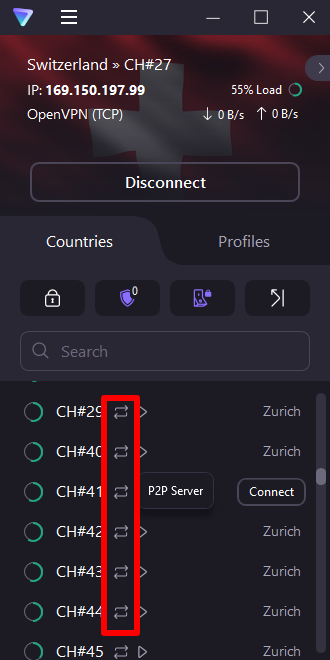
- How to enable Port Forwarding on the Windows app
- How to enable Port Forwarding using the Linux app
- How to enable port forwarding on qBittorrent
- How to enable port forwarding on Vuze
- How to enable port forwarding on uTorrent (Classic)
How to enable Port Forwarding on the Windows app
1. Open the app and go to Settings → Advanced tab. Toggle the Port Forwarding switch on.

From here, you can also enable or disable Port forwarding notifications and the Port forwarding shortcut (see below).
2. When port forwarding is activated, the VPN app sends a request to the VPN server to open a random port that will forward traffic from the internet to the app. The active port number used for this is shown in the information panel at the top of the main app window when you connect to one of our P2P VPN servers.
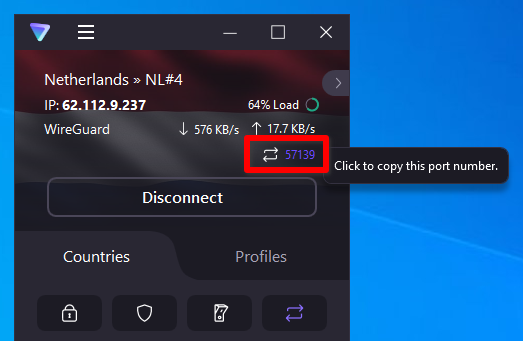
You’ll need this number to configure port forwarding on third-party software such as your BitTorrent client. Please note that, in most cases, the active port number will change when you disconnect and reconnect the VPN.
This will probably mean you will need to reconfigure your VPN client for each VPN session, but doing so is very quick and easy (see below), and the active port is available to use immediately.
Port forwarding notifications
When this setting is enabled, you will be notified when the active port number changes.
Port forwarding shortcut
Enabling this allows you to access the port forwarding settings from the Quick Settings bar on the app’s main screen.
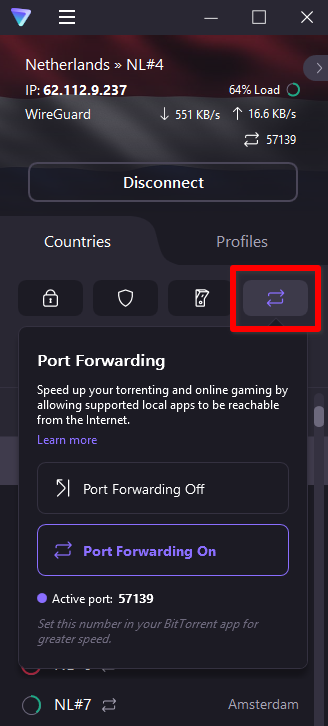
How to enable Port Forwarding using the Linux app
Currently, port forwarding on Linux is only partially automated and requires some manual setup.
1. Open the app, go to Settings, and toggle the Port forwarding switch on.
2. Connect to a P2P server
3. Create a UDP port mapping on UDP, which is needed for port forwarding. Enter:
natpmpc -a 0 0 udp 60
In the example below, port 43935 has been allocated for this.

4. Create a port mapping on TCP.
natpmpc -a 0 0 tcp 60
In the example below, port 43935 has been allocated for this.

5. Finally, loop natpmpc so that it doesn’t expire. Enter:
while true ; do date ; natpmpc -a 0 0 udp 60 && natpmpc -a 0 0 tcp 60 || { echo -e "ERROR with natpmpc command \a" ; break ; } ; sleep 45 ; done
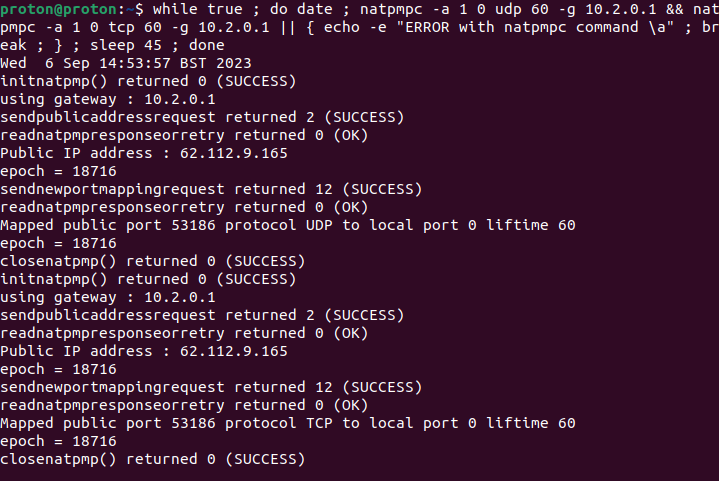
Port forwarding is now activated. Note that closing your terminal window will terminate the loop process. You’ll need to re-run this loop script each time you want to start a new port forwarding session, or the port will only stay open for 60 seconds.
How to enable port forwarding in your BitTorrent client
Port forwarding will work in any BitTorrent app. We provide instructions for a few popular Windows torrent apps below, but the steps are similar for all such software. Just remember to disable any UPnP and NAT-PMP settings in your client.
The reason for this is that UPnP and NAT-PMP settings can conflict with settings in the Proton VPN app.
How to enable port forwarding on qBittorrent
1. Enable port forwarding in the Proton VPN app (see above) and launch qBittorrent.
2. Go to Tools → Options → Connection and disable Use UPnP / NAT-PMP port forwarding from my router (it is enabled by default)
3. In the Port used for incoming connections field, enter the active port number shown in the Proton VPN app.
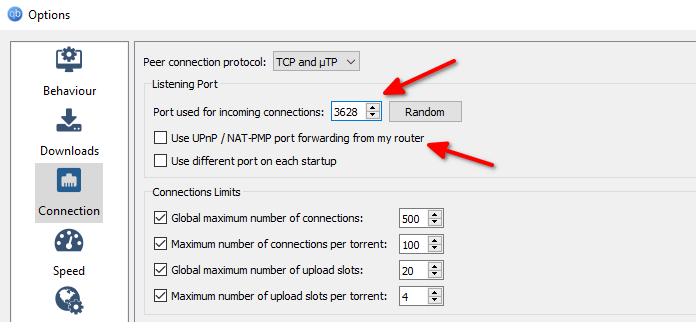
Click OK when you’re done.
How to enable port forwarding on Vuze
The screenshots below show Vuze in Beginner Mode, but the steps are identical for all modes.
1. Enable port forwarding in the Proton VPN app (see above) and launch Vuze.
2. Go to Tools → Options → Plugins → UPnP and uncheck (disable) Enable UPnP.
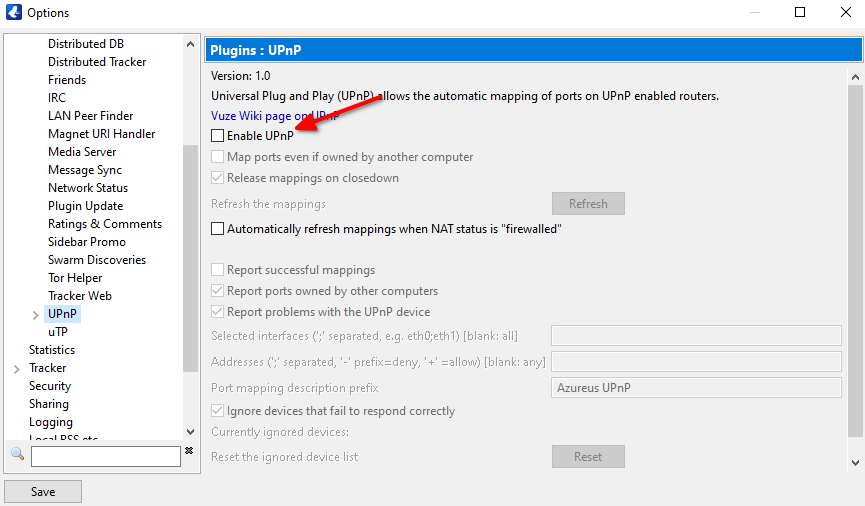
3. While still on the Options page, go to Connection and enter the active port number shown in the Proton VPN app.
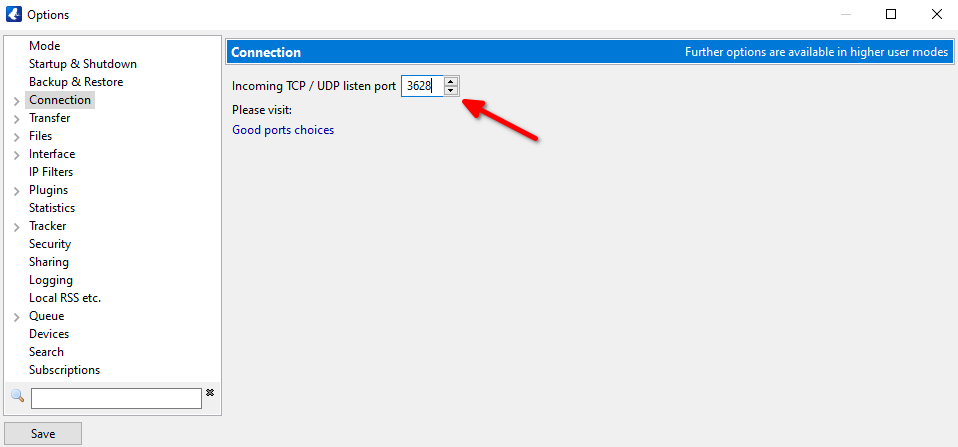
Click Save when you’re done.
How to enable port forwarding on uTorrent (Classic)
1. Enable port forwarding in the Proton VPN app (see above) and launch uTorrent.
2. Go to Options → Preferences → Connection and uncheck (disable) both Enable UPnP port mapping and Enable NAT-PMP port mapping.

3. In the Port used for incoming connections field, enter the active port number shown in the Proton VPN app.
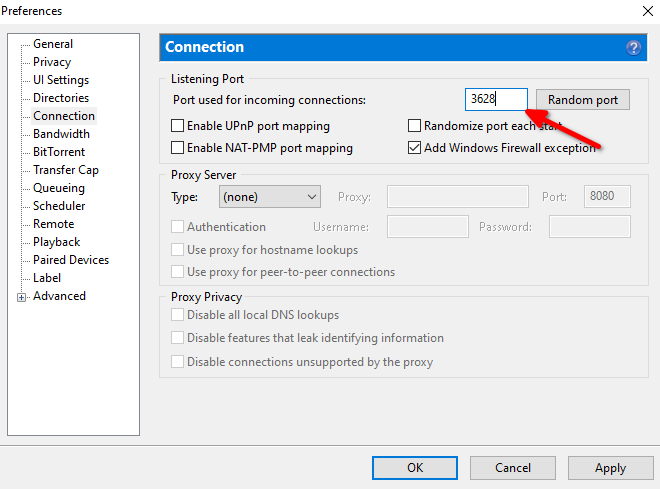
Click Apply when you’re done.
Opening a port carries a small risk. See Port forwarding security considerations for more details.